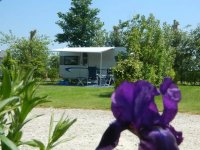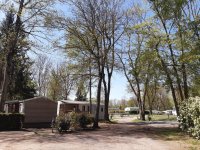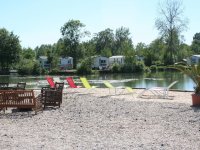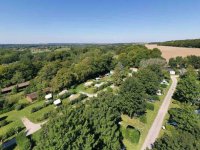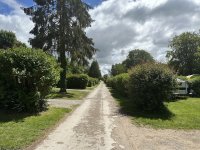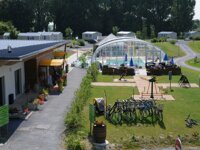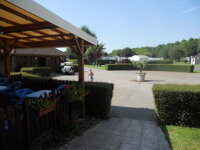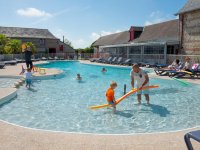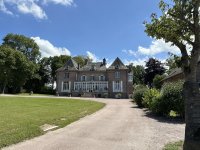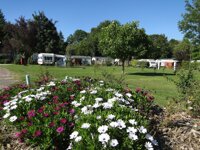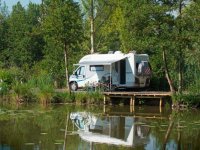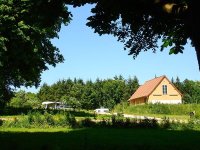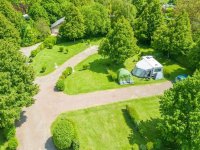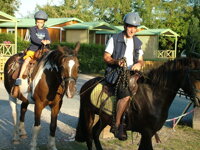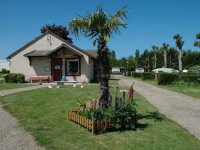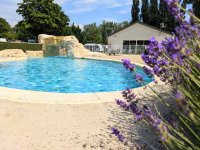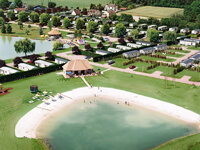Camping in Picardy
41 campsites in France, Picardy
Campsite Listing Google Map
The following consent is required:
Tracking & performance, Targeting & advertising.
Picardy
The birthplace of Gothic architecture in France with no less than six cathedrals, Picardy is still predominately rural with deep river valleys, forests of mature beech and oak, peaceful lakes and sandy beaches providing plenty of contrast.

France itself was born in this northern province located between the Marne and the Somme rivers, for it was here that the Franks – ancestors of the French – first settled. Picardy tends to be a region that most people travel through, and this was the invaders' route. Evidence is visible in the 17th-century defensive citadels designed by Vauban at the end of a long period of conquests by English kings and Burgundian dukes.
From a more recent age, acres of immaculately tended war graves are a sobering reminder of two Great Wars. At Vimy Ridge near Arras, World War One trenches have been preserved, a poignant sight. Elsewhere, almost every village between Arras and Amiens has its memorial.
Picardy’s unspoilt coastline, with its wild beauty and changing light, has inspired generations of artists, Degas and Seurat among them. Today’s visitors can enjoy a wide range of activities – cycling, windsurfing, kayaking, sand-yachting, horse riding and hot-air ballooning. The region also has some of the best golf courses in France. Do not miss the spectacular ‘Baie de Somme’ with its dunes and saltwater meadows, and the magnificent Gothic cathedral at Amiens.
A combination of flat and gently rolling terrain and possessing a quintessentially French atmosphere, Picardy is said to be the crossroads of France due to its proximity to Belgium in the east and Paris in the southwest. A picturesque region, it has a feeling of immense space and boasts some of the most beautiful cathedrals in the world.
The best-known part of Picardy is the Somme, an area synonymous with one of the most devastating battles of the First World War. Many trenches and cemeteries remain as both a reminder and a warning of the desolation that conflict brings. Also in the Somme is Amiens, a lively city that lays claim to the largest, and arguably the most impressive, Gothic cathedral in France, as well as Le Crotoy with its fine, sandy beach – the only south-facing one in northern France. St Quentin in Aisne features some wonderful art deco buildings, as well as a beautifully maintained garden and park named ‘Champs Elysées’.
History enthusiasts will love Picardy, exploring the Great War sites and admiring the architecture in between walking or cycling through lush green countryside.
Places of interest

Abbeville: Church of St Vulfran; Bagatelle Château; Baie de Somme nature reserve.
Amiens: Notre Dame cathedral, impressive for its size and richly sculpted façade and the stone carvings of the choir; monument to the 1918 Battle of the Somme; remarkable ‘hortillonnages’ (water gardens) and interlocking canals.
Aisne: surrounded by 60 fortified churches.
Chantilly: Château of Chantilly with a 17thcentury stable with a ‘live’ Horse Museum.
Compiègne: Seven miles east of the town is Clairière de l’Armistice. The railway coach here is a replica of the one in which the 1918 Armistice was signed and in which Hitler received the French surrender in 1942.
Laon: 12th-century cathedral; WW1 trenches; Vauclair Abbey.
Marquenterre: one of Europe’s most important bird sanctuaries.
Cuisine of the region
Fresh fish and seafood is popular, as is chicory flavoured coffee.
Carbonnade de Boeuf à la Flamande: Braised beef with beer, onions and bacon.
Caudière (Chaudière, Caudrée): Versions of fish and potato soup.
Ficelles Picardes: Ham pancakes with mushroom sauce.
Flamiche aux poireaux: Puff pastry tart with cream and leeks.
Soupe courquignoise: soup with white wine, fish, moules, leeks and Gruyère cheese
